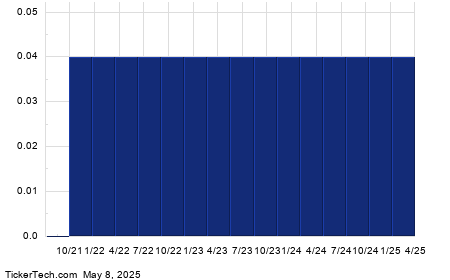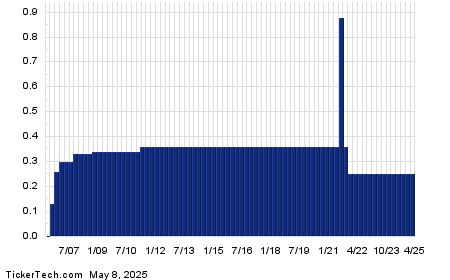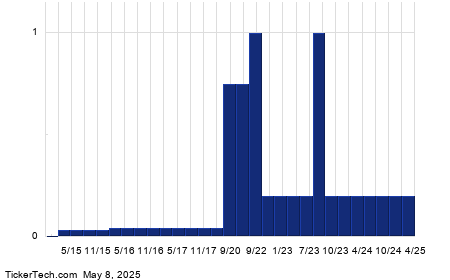Investors Eye Long-Term Gains with Nvidia, Amazon, and AMD
Investors have been snapping up Nvidia (NASDAQ: NVDA) shares extensively over the last few years, leading to a remarkable increase of more than 2,000% since 2020. The company’s stronghold as a leading artificial intelligence (AI) provider highlights its potential for further growth.
The unparalleled seller of AI chips has displayed an impressive track record of earnings growth. Coupled with the overall strength of the AI market and Nvidia’s ongoing innovation strategy, this trajectory suggests robust revenue growth in the future.
Start Your Mornings Smarter! Get your daily market updates with Breakfast news in your inbox. Sign Up For Free »
For investors who opt for a buy-and-hold strategy with Nvidia Stock, the current market offers a solid entry point. After a recent decrease in price, it’s trading near its lowest point in about a year based on forward earnings estimates.
However, Nvidia is not the only tech player poised for growth in this rapidly advancing market. Other companies, particularly those that have not seen such dramatic increases, could be primed for a rally. Notably, e-commerce and cloud computing titan Amazon (NASDAQ: AMZN) and AI chip contender Advanced Micro Devices (NASDAQ: AMD) warrant attention. Should investors consider these alternatives over Nvidia? Let’s delve into the details.

Image source: Getty Images.
A Strong Case for Amazon
Amazon boasts billions in annual revenue generated from its thriving e-commerce and cloud services sectors. Its integration of AI technology has enhanced operational efficiency in its e-commerce business, providing consumers and sellers with valuable tools that reduce costs. This strategy keeps customers returning for more.
In the cloud sector, Amazon Web Services (AWS) has quickly converted its AI investments into substantial revenue. AWS’s annual revenue run rate reached $115 billion, driven by a diverse range of AI products and services. Given that AWS is Amazon’s primary profit generator, this growth is particularly noteworthy.
Last year, Amazon reported net sales of over $638 billion, a rise of 11%, while operating income soared nearly 90% to reach $68 billion, with AWS accounting for nearly 60% of that figure.
Optimism surrounding continuous growth is justified as Amazon intensifies its AI focus and expands its AWS portfolio. Recently, the company launched Amazon Nova, its proprietary foundation models, providing cost-effective solutions to customers, similar to its in-house chip offerings.
Currently, Amazon Stock trades at 30 times forward earnings estimates, higher than Nvidia’s current rate of 25 times.
Evaluating AMD’s Opportunities
As a competitor in the AI chip market, AMD is trailing Nvidia, which commands an 80% market share. However, AMD’s position may not hinge solely on outperforming Nvidia to succeed in the AI landscape.
This designer of central processing units (CPUs) and graphics processing units (GPUs) offers potential AI customers a lower-cost alternative to Nvidia’s pricier chips. This strategic positioning has led to impressive recent growth.
In the previous year, AMD’s data center revenue surged 94%, hitting a record of over $12 billion, while overall revenue rose 14% to surpass $25 billion. Although this is significantly less than Nvidia’s $130 billion in revenue, the important fact is AMD continues to achieve solid growth and maintains a healthy profitability level, with a 49% gross margin last year.
AMD has been “investing aggressively in AI,” suggesting that further growth opportunities may be on the horizon, particularly as analysts foresee explosive growth within the entire AI sector throughout the decade.
Today, AMD trades for just 22 times forward earnings estimates, making it more affordable than both Nvidia and Amazon.
Comparing Investment Potential: Nvidia, Amazon, or AMD?
It’s crucial to note that Nvidia is currently trading at bargain prices, reinforcing its reputation as a leading player in the AI market. Therefore, I’m not discounting Nvidia as a long-term investment. Concerns over the tech market’s current challenges, such as potential tariffs on imports, aren’t likely to drastically alter the long-term outlook for these companies.
Nevertheless, based on current evaluations, AMD stands as the most budget-friendly option with significant growth prospects, while Amazon provides a diversified investment in both e-commerce and cloud services.
Thus, while it’s wise not to overlook Nvidia entirely, investors should definitely give Amazon and AMD a closer look and consider acquiring these tech stocks at today’s appealing prices.
Should You Invest $1,000 in Amazon Now?
Before making an investment in Amazon Stock, consider this:
The Motley Fool Stock Advisor analyst team has identified their top 10 stock picks for investors at present—and Amazon is not included. The stocks on this list have the potential for substantial returns in the coming years.
Reflect on this: When Nvidia was listed on April 15, 2005, an investment of $1,000 would now be worth $707,481!*
Stock Advisor offers investors a straightforward guideline to success with advice on portfolio building, timely analyst updates, and two new Stock recommendations each month. This service has exceeded the S&P 500 returns by more than four times since 2002*. Don’t miss out on the latest top 10 list when you join Stock Advisor.
see the 10 stocks »
*Stock Advisor returns as of March 18, 2025
John Mackey, former CEO of Whole Foods Market, an Amazon subsidiary, serves on The Motley Fool’s board of directors. Adria Cimino holds shares in Amazon. The Motley Fool has positions in and recommends Advanced Micro Devices, Amazon, and Nvidia. The Motley Fool has a disclosure policy.
The views and opinions expressed herein are solely those of the author and do not necessarily reflect those of Nasdaq, Inc.




